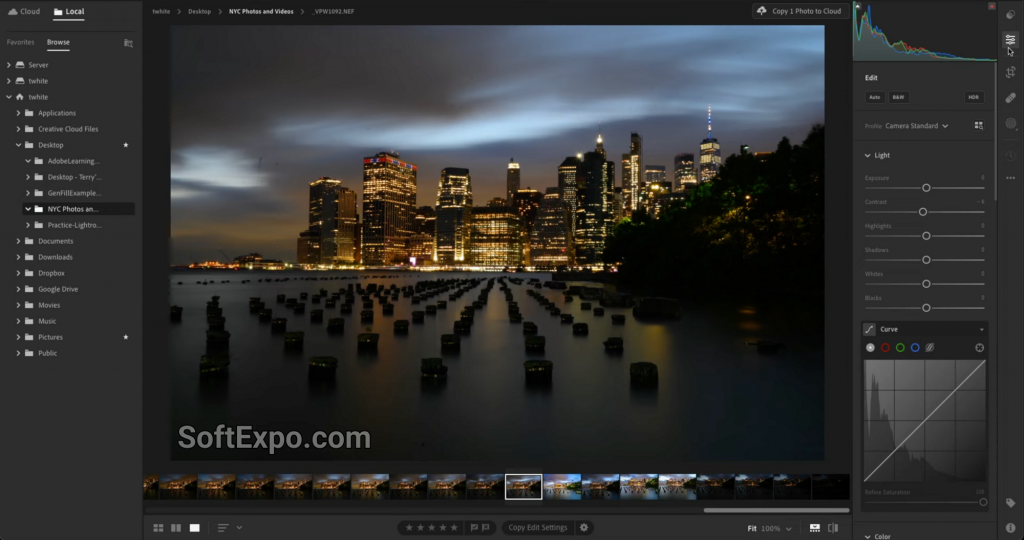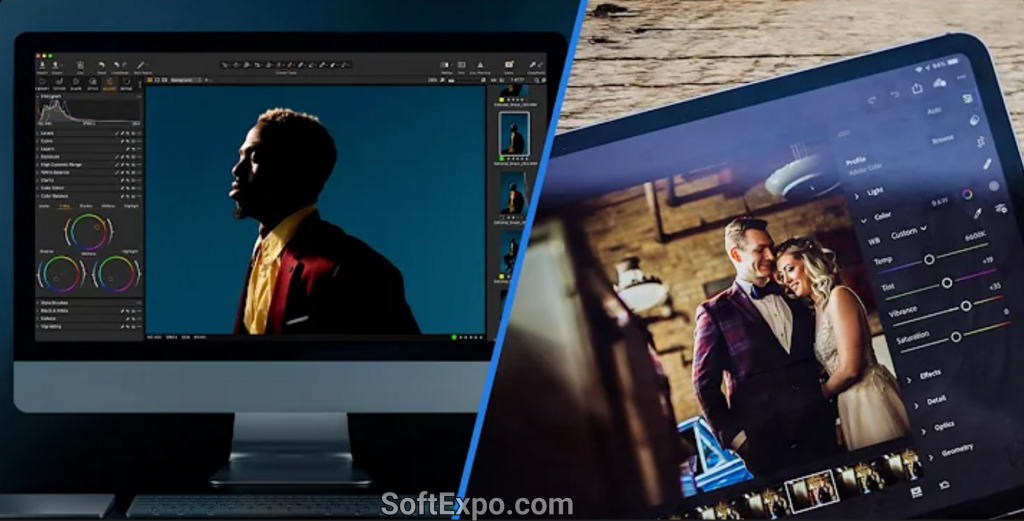Categories
Popular tags

All rights reserved © 2025
Categories
All rights reserved © 2025
Adobe Photoshop Lightroom vs Capture One Comparison
Every expert in their profession is always faced with the choice of software and professional photographers are not an exception. While the market offers a wide range of programs, in this article, I aim to review and compare two of the leading giants in this industry: Adobe Photoshop Lightroom Crack and Capture One. They’re both cross-platform programs and are available for both Windows and macOS users. Hopefully, in this article we will compare these two tools and look for the better of the two.
Both editors’ core functionality is above what it is to deliver speed and convenience in batch processing photos. Basic light and color corrections, tone adjustments, image sharpening and reducing noise, and applying these settings to a batch of photos with a few mouse clicks is all you need. Even though I just mentioned the features that are shared by both, still they vary, and you can choose according to your own need which one of them you want initially.
Interface
The question of which interface is more user – friendly is naturally so subjective that we can’t choose. What I’m going to do here is just list the differences between these two, so you can pick which one is a better fit for you.
Capture One is usually commended by photographers for its ability to customize the menu completely and remove some of the unused panels and add those which are used more frequently. For example, if you don’t work with grain or vignette effects, you can hide them from the user’s view by simply hiding the effect. In the cracked version of Lightroom however tools can’t be completely removed, they can only be minimized.

Alternatively, such a division into separate windows, specifically allocated to some functions, is a supreme convenience provided by Lightroom:
- Library – organizes, importing, and exporting files.
- Alternative uses – photo editing and adjustments.
- A geographical location marker “map” – to mark the place you took a photo.
- Book – an integrated editor for creating photo book albums, calendar books, card books and more.
Capture One operates on a single window with all the tools at hand, but lacks some of the features like the book creation tool.

Adobe Lightroom Presets and Styles in Capture One
Both of these programs lets you save your adjustments to brightness and color settings. These saved style settings are called “styles” in one and “presets” in the other. The only real difference is terminology, and the function is the same.
More widely used software option is Lightroom. While this will not be a huge difference for the pros however beginners trialing out photography will be able to find ready – made presets for this program. There are a bunch of bloggers and photographers that make their own presets, and there are tons of free sets out there with innumerable presets online just for a few clicks.
Pro Tip: They have different file formats, so it’s not possible to transfer styles or presets from one to the other.
Layers and Masks in Softwares
With Capture One you can choose specific areas in an image by color or brush to adjust the color, the tone, and the white balance of the specific area selected. In addition to that there’s a tool to carefully remove unwanted bits from a mask using the eraser tool. It applies all corrections in layers – including the ability to turn them on or off, delete them or adjust their opacity.
A similar tool, the Brush, is available in Lightroom and, while more generally applicable, has historically worked more sluggishly. Along with that, it doesn’t have the capability to modify specific colors in the specified area, which can be a drawback for regular users. The latest updates in the cracked version ease layer adjustment, but when it comes to fine – tuning individual colors, Capture One takes a lead.
Unique tools
Both software provide some special tools that make them unique. I’ll lay out these functions, all with brief descriptions, so that they can freely exchange hands, untainted by the notion of impartiality to allow you to decide based on what it is you need. In the end, it will ultimately be for you to decide what features are the most important.
Select Sky and Select Subject in Adobe Lightroom
With 5.0 version and later, the software contains the ability to detect the sky and other objects within an image. In short, this feature’s primary advantage is that it automatically detects object, and then you can select it in one click. Selecting it, and acing the necessary changes as you wish.
Overlay in Capture One
This is a program to superimpose one photo onto another and adjust how the overlay is tints. For this, you can use any images that are stored in your computer.
Vibrance in Lightroom
This professional software has a Vibration feature that lets you reduce or increase the amount of brightness and saturation. Through the use of this function, you can get a unified look in a tone of colors for all your images, which means they will be visually adjusted with each other.
Luminance Range in Lightroom
In the selection options, if you choose Luminance Range, you’re able to click on the area you’d like, and the editor will create a mask around the pixels that are within similar brightness. Let’s say you want to change the white balance in the darker parts of an image, click there and able to make it whatever you like.
Moire in Capture One
The aim of this tool is to eliminate the Moire effect in image. It happens when an undesirable, hyper fixing pattern of the color is generated on clothing with fine prints not seen in the original scene. Another reason to consider this, however, is that it’s very useful when editing high contrast photos with plenty of fine detail, because the device mitigates against fine texture intruding into the image while hitting the sensor pattern.
Draw Annotations in Capture One
If many people are working on an image together, the ‘”Draw Annotations” feature is incredibly useful. This tool is whether its teamwork or client and designer communication, it allows anyone involved to write directly on top of a photo, highlight errors, and identify where more attention is needed. It looks like a normal pencil where you can scribble on the edited image without being annoyed about making mistakes. Hiding or keeping the annotations visible is an option when you save the saved photo.

Download crack versions of both programs – Adobe Photoshop Lightroom and Capture One you can from our site without fear of infecting your computer with malicious files, because for your and their safety we check all links and files using antivirus programs and sites. For your convenience, we provide the ability to download files using torrent trackers or you can download directly by the links or mirrors.
Conclusion
Finally, you might not be able to choose between a definitive leader in these two software categories, as there are pros and cons of each. They both have their own tools and features set which we can say has an edge over others. Adobe Photoshop Lightroom on the one hand is more beginner – friendly and has a wealth of features to explore, but the interface structure of Capture One here is more intuitive.
I wanted to avoid skidding one way or another for my own personal preferences when providing an unbiased review of these two programs. I believe these may solve your search for the best option you need at the moment.
The only thing I want to conclude with is to advise you are supposed to master one program before you start on the second. After you have one editor in the palm of your hand, it usually doesn’t take much more than a few days or a week to pick up another editor. This strategy will boost your photo editing skills ten times more than with this strategy alone, therefore, substantially increasing the value of the photo editing expert with remarkable skills in using the most demanded editors in the market.
